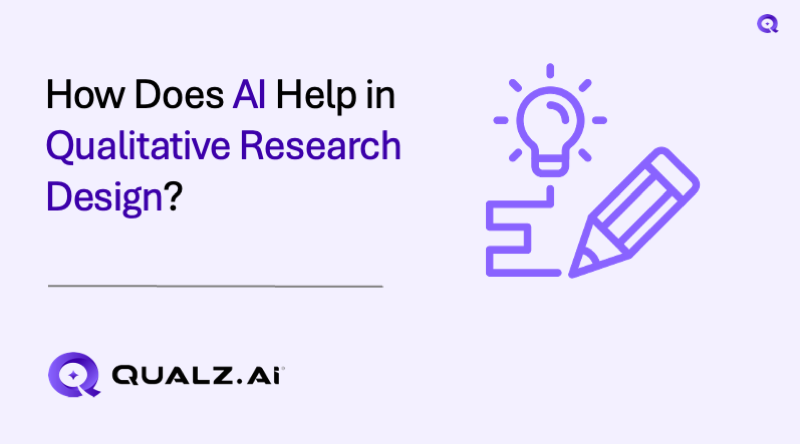Qualitative research design is the foundation of meaningful insights, but it often comes with time-consuming manual tasks. Whether it’s transcribing hours of interviews, coding themes from open-ended surveys, or organizing messy data, the process can feel overwhelming.
AI is changing that. It’s not about replacing researchers; it’s about equipping researchers with tools to work faster and smarter.
Topics Covered
ToggleIn this blog, you’ll learn how AI helps in your qualitative research design while keeping your process rigorous, ethical, and human-centered.
Reimagining Qualitative Research Design with AI
The traditional approach to qualitative research design involves a lot of manual effort:
- Recruiting participants and scheduling interviews
- Transcribing and organizing data
- Coding themes by hand
- Compiling lengthy reports
With AI research design, it helps to alleviate many of these burdens. From smart survey design to interview design with AI, qualitative research design becomes more efficient and adaptable.
How AI Supports Qualitative Research Design?
1. Structuring Your Research Plan
AI-powered platforms can help you craft your qualitative research design by:
- Generating research questions aligned with your objectives.
- Recommending formats for focus groups, interviews, or surveys.
- Designing adaptive discussion guides based on initial input.
These tools make it easier to structure a design that remains flexible yet methodologically sound.
2. Data Collection that Responds to Context
AI-Assisted Survey
Modern surveys support voice responses and mobile delivery, perfect for fieldwork or on-the-go participants.
AI-Moderated Interviews
AI-moderated interviews that support multiple languages, contextual follow-ups, and asynchronous participation. This makes your qualitative research design inclusive and scalable.
Using Synthetic Participants
Synthetic participants simulate real-life personas and offer a creative way to:
- Pilot test interview scripts
- Validate your qualitative research design before live data collection
- Explore hard-to-reach demographics
How to Select the Right AI Tools for Qualitative Research Design
Not all tools are built the same. When choosing a AI-driven research platform, ensure it:
- Has end-to-end research workflows (from design to reporting)
- Allows for the design of open-ended survey questions.
- Tailors follow-up questions based on responses for richer insights.
- Suggest interview guidelines based on your research objectives.
- Allows you to maintain full control while benefiting from AI suggestions.
Conclusion: Elevate Your Qualitative Research Design
AI is reshaping what’s possible in qualitative research design. From the first draft of your study plan to your final report, AI can help you move faster, dive deeper, and communicate findings more clearly.
The right platform should support you at every step, from design to data collection to analysis and reporting. Some platforms, like Qualz.ai, are already setting the standard.
Sign up for free today and start experimenting with AI-powered qualitative research design.
